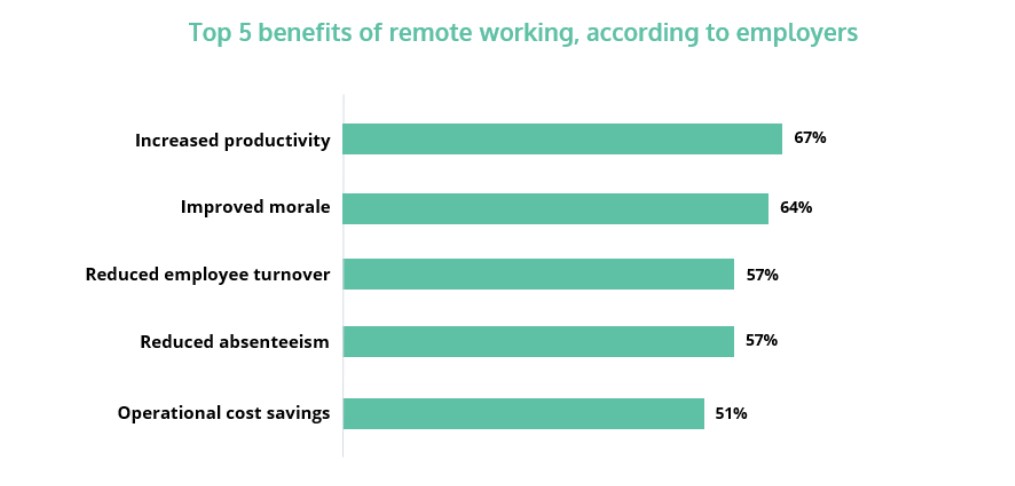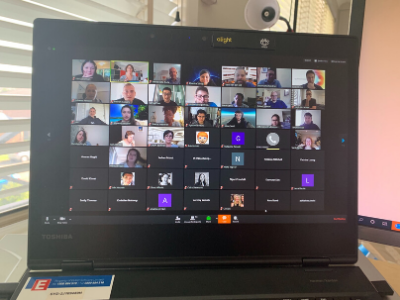COVID-19: How to Effectively Embrace Remote Working in Times of Uncertainty

The spread of coronavirus (COVID-19) around the world is having significant impacts on individuals, communities, businesses and governments. In response, businesses in Australia, New Zealand and worldwide are being forced to adopt remote working to ensure the safety of their employees and other citizens.
The shift towards remote-first is not new – many businesses have been adapting workplace practices and behaviours to aid better work/life harmony for years. Today, 68% of Australian employers now allow employees to work remotely.[1] In New Zealand more than half of employees (54%) can work from home, and 19% work remotely all the time.[2]
However, what businesses haven’t accounted for is the forced acceleration of remote working that COVID-19 has triggered. It has caused an unwelcome and stressful remote-first experiment. Businesses around the world must accept that “home office” will be the new norm for the foreseeable future.
The benefits of remote working – and the challenges to be aware of
Despite the stressful and frightening circumstances, businesses must remain calm and make practical decisions. This forced shift in workplace habits is an opportunity to fine-tune flexible working practices, which is ultimately what employees desire. In fact, MetLife Australia’s Employee Benefit Trends Study (EBTS) found that 92% of employees think flexible work is a “must have” or “nice-to-have”.[3]
Remote work is the future of the workplace – as stated by 82% of respondents surveyed by GitLab’s inaugural Remote Report.[4] What’s more, 83% of respondents say that they are already able to complete all their tasks remotely.
Traditional working habits are hard to break, and some business leaders may be fearful that implementing flexibility into their organisation will jeopardise high performance. Fortunately, many businesses have trialled remote working and have felt numerous benefits. For example, with no commute and more autonomy to determine working hours and location, employees can achieve a better work/life balance.
A survey by Censuswide[5] identified the top benefits of remote working. See the findings in the graph below.

The results show that remote working has great quantitative and qualitative benefits that boost overall business performance.
While there are clear benefits of remote working, there are challenges, too, including lack of workplace setup (especially difficult to achieve when working on-the-go) and distractions (e.g. home distractions such as chores, kids and pets). Despite this, according to the Annual IWG Global Workspace Survey (2019), 85% of employers have experienced an increase in productivity as result of greater flexibility.
Read ELMO’s blog on the 7 most unique workplace trends offered to employees today.
How to ensure remote working is productive and profitable
Pandemic or not, remote working isn’t available to everyone due to the nature of some roles. However, where it is possible, consider the following tips.
- Communication is key
For remote working to be a success, communication between workers must be rife. Managers should conduct regular check-ins with their team members to ensure everyone is aware of what is expected of them and of business objectives.
Face-to-face video calls are the best way to keep a team unified and engaged on projects. Slack and Zoom are great tools to instantly connect workers and encourage real-time collaboration.
At ELMO we champion Zoom. We use it to host company-wide virtual morning and afternoon tea sessions to ensure our team is staying ‘social’ in isolation.

2. Adopt cloud-based programs to maximise productivity
In today’s technically advanced world, many businesses operate online and through cloud-based systems, meaning employees can access their work from any device, in any location, at any time.
HR professionals will benefit greatly from an integrated, cloud-based system, where they can manage people processes and pay effectively, safely and, importantly, remotely.
3. Adapt management practices
Luckily, many businesses already champion remote working, meaning that managers are finding contemporary ways to measure and monitor employee productivity. This new era requires a different employer-employee relationship, one that shifts away from the traditional focus on where and when employees work, towards what employees do, or outputs.
Managing remote workers differs by business, but should include amped up communication, setting clear objectives, and encouraging team collaboration.
4. Prioritise health and wellbeing
An employer’s duty of care extends beyond the physical boundaries of an office. The physical and mental wellbeing of employees is the responsibility of the employer, regardless of whether the work is carried out in on- or off-site.
Therefore, employers must ensure that employees have everything they need to set up a safe home workspace. This may involve asking employees to “self-check” their home workspaces to confirm they are safe, comfortable and productive.
Coupled with physical safety is psychological safety. It may be hard to monitor employees’ psychological wellbeing while they are working remotely, but the most important thing employers can do is offer consistent support. ELMO employees are encouraged to take advantage of our employee assistance programs (EAP) during stressful times.
5. Keep morale high
The danger of remote working – especially to those opposed to it – is that it limits social bonds that are essential for productive teamwork and morale. Business leaders and managers must do what they can to keep spirits high during uncertain times; to address issues with their teams but not incite panic; to keep workers in-the-loop; and to be a cheerleader of their efforts.
Since COVID-19 is prompting businesses to enforce remote working policies – and workers will need to adapt quickly in order to maintain high productivity – it will no doubt redefine the working culture permanently. While these uncertain times cause rightful concern and anxiety, business leaders must make the right decisions, be willing to adapt, and look out for their employees’ wellbeing.
ELMO Software end-to-end solutions cover the entire employee lifecycle, from hire to retire. Our solutions are cloud-based, meaning they can be accessed anywhere, at any time, on any device. This enables HR teams to manage their teams effectively in a remote working environment. To find out more, contact us.
[1] Survey by Censuswide on behalf on Indeed, 2018
[2] “The rise of remote working and what it means for the workplace”, HRNZ, 2020
[3] Thriving in the New Work-Life World, EBTS Report 2019
[4] “The Future of Work is Remote”: GitLab, 2020
[5] Survey by Censuswide on behalf of Indeed, 2018
 HR Core
HR Core 









